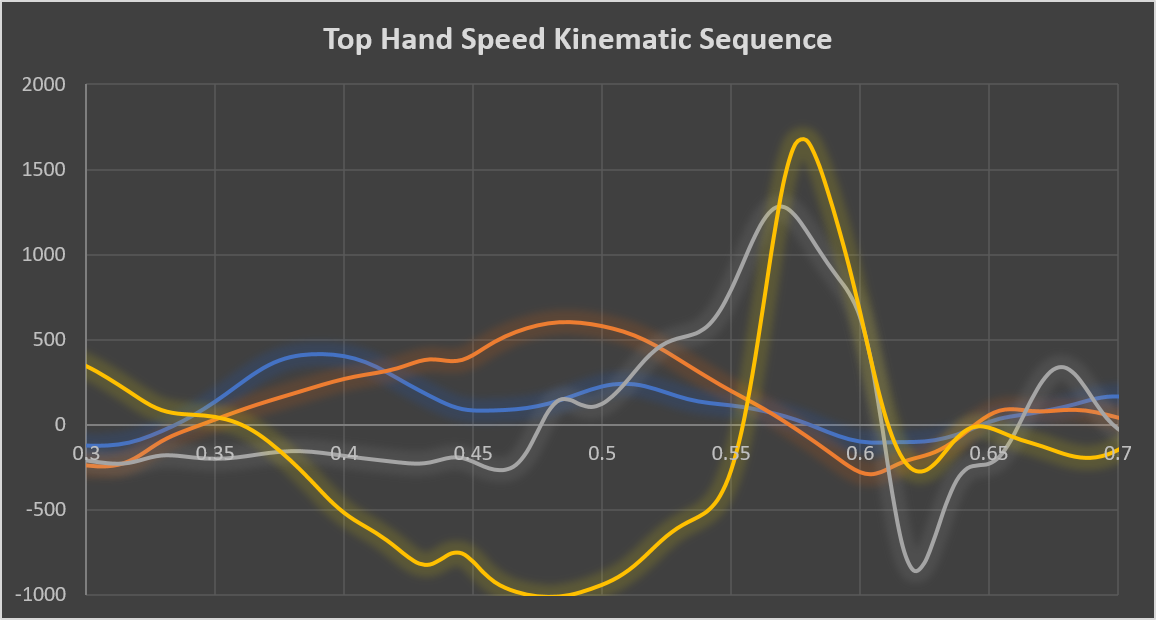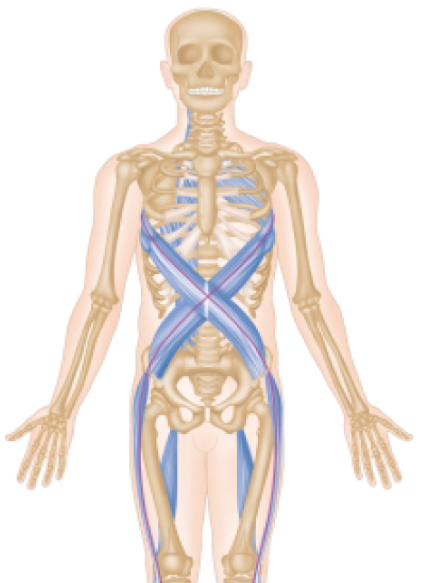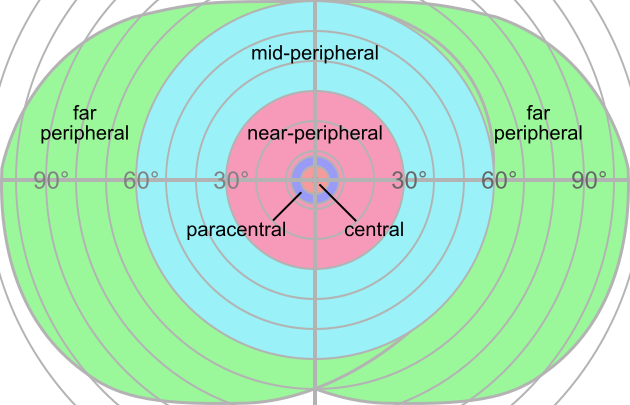The USA Men’s Volleyball team suited up and stepped into our 3D world to take a closer look at arm swing mechanics and how it relates to hand speed, technique, and injury. What produces the fastest hand speed? Is there an optimal technique? What mechanics put players at risk for injury? These are the questions we have set out to answer.
HAND SPEED
The kinematic sequence is the optimal order in which your pelvis, torso, elbow, and shoulder rotate about a specific axis in a specific order. To maximize hand speed when spiking, that sequence is:
- Pelvis rotation angular velocity about the vertical axis
- Torso rotation angular velocity about the vertical axis
- Elbow extension angular velocity
- Shoulder internal rotation angular velocity

For maximum hand speed, each segment must hit their peak speed in this specific order, but also must be faster than the previous segment.
At the Olympic level, this sequence is consistent amongst all hitters that we tested. In addition, the minor variations that we observed can show why some have slightly faster hand speeds than others. Aside from the fact that those with the smoothest sequence had the fastest hand speeds, a big predictor is the pelvis-torso portion of the sequence. The athletes that show a peak torso rotation angular velocity that is faster and occurs after their peak pelvis rotation angular velocity (the ability to rotate at their core) typically had a faster hand – which translates to faster ball speed.
The separation of the torso from the pelvis allows the athlete to take advantage of the stretch-reflex of the anterior fascial spiral line that runs up one hip and crosses the core to the opposite side. Rotational separation of the torso from the pelvis stretches this fascial line out and creates a sling-shot effect, thereby increasing the velocity transferred to the rest of the kinematic chain.

Image from: Anatomy Trains by Thomas Myers
INJURIES
The diverse types of pain were also reflected in the kinematic sequence. Those with a poorer sequence in their elbow-shoulder portion tended to be the players that complained of shoulder injury. But as countless researchers will say, the question is whether the athletes have altered their mechanics to protect their joint from pain or further injury, or if it is a causing factor of the injury.
Other players that have issues with knee and low back pain demonstrated poor pelvis-torso rotation. This hints at the notion that having a core that is too stiff (combined with poor extension through their jump) results in the ground forces being improperly dispersed into the knees and low back. We see this often with jumping athletes and defenders. What helps with explosive jumping and quick lateral movement performance hinders their ability to rotate or extend through the movements. Therefore, their bodies do not adequately absorb the high forces being generated.
In summary, it is important to balance training focus on performance as well as injury prevention. The Olympic athletes that we tested all had a very energy efficient sequence of movement to maximize hand speed. Poor sequencing is difficult to identify because of the speed of the attack and the inability of the human eye to really see it. When captured and analyzed with the Gears motion capture 3D technology, poor sequencing can be identified and corrected to enhance performance as well as help prevent injury. Through this type of analysis and training, athletes can be better equipped to distribute and maximize the high velocity loads being transferred through their body.



